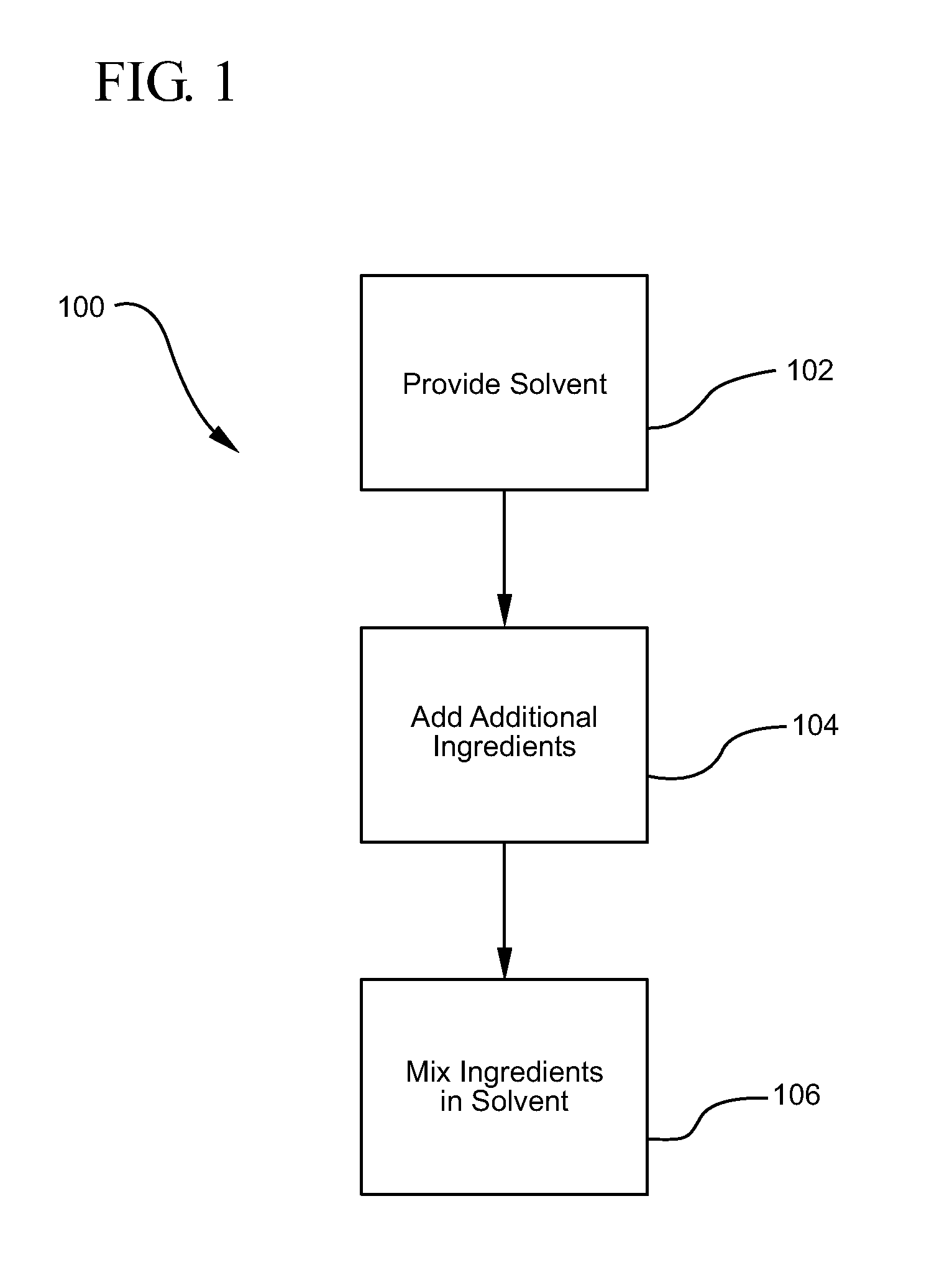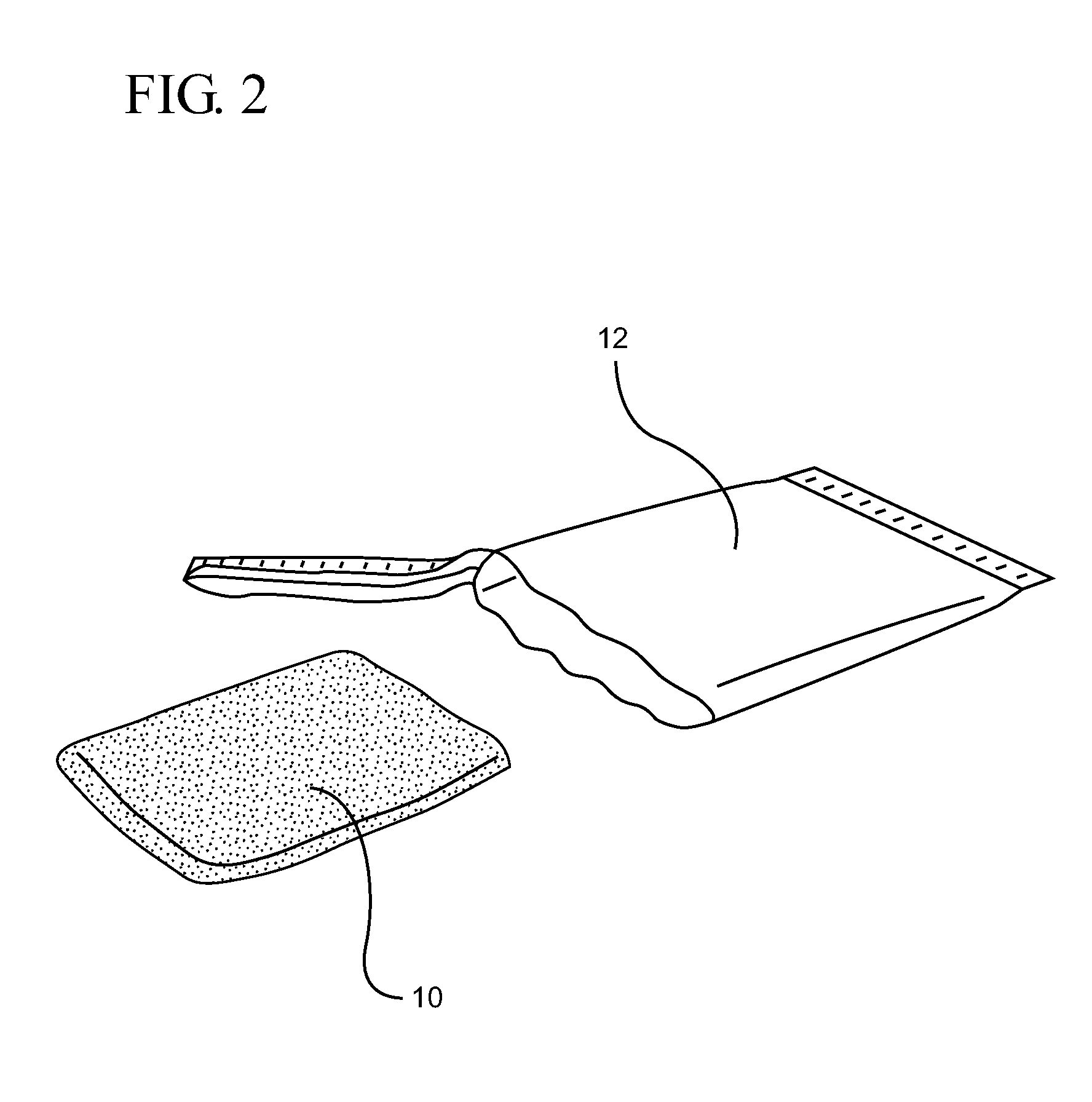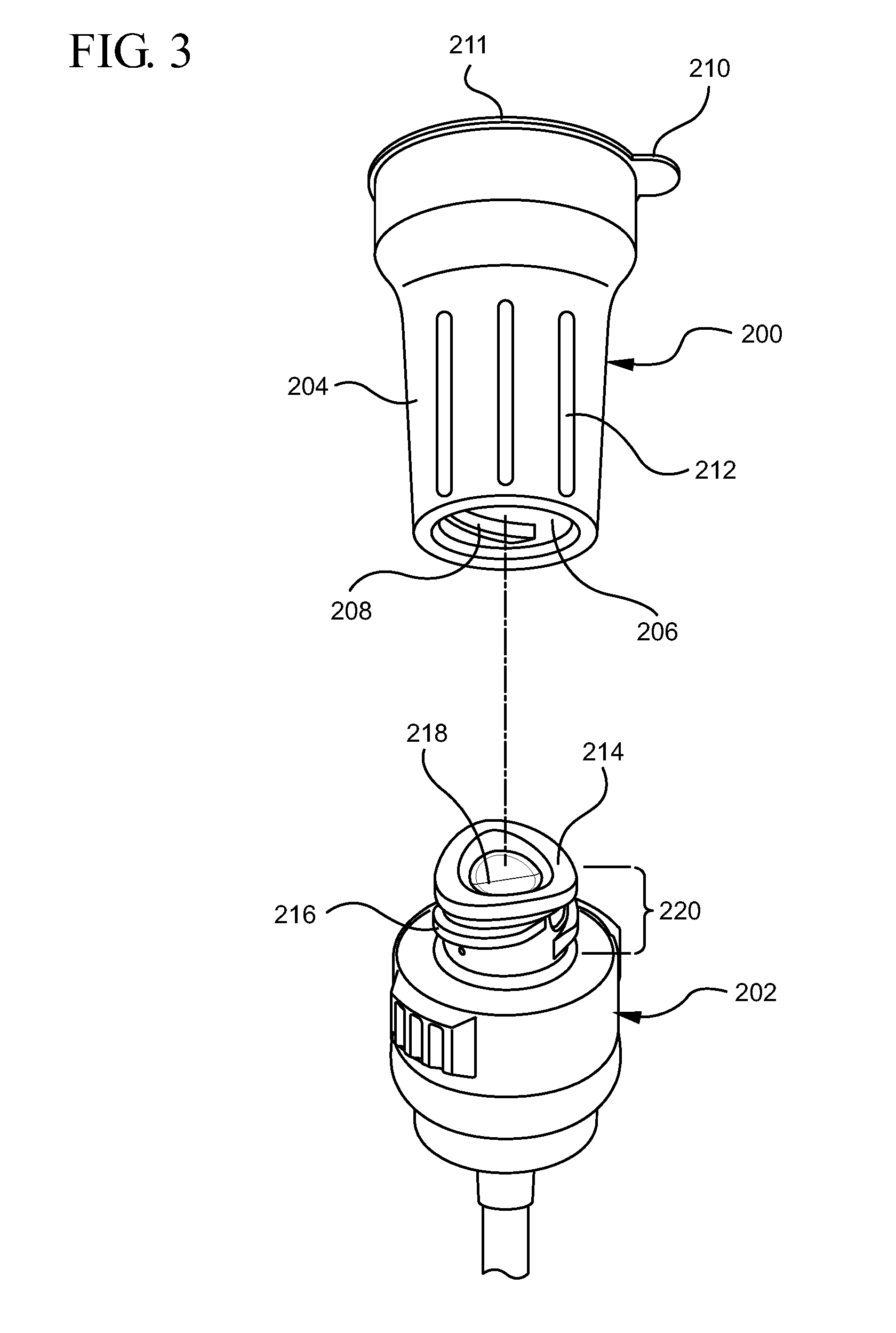Chlorhexidine acetate antiseptic cleaning agent
a technology of chlorhexidine and cleaning agent, applied in the field of antiseptic cleaning agent, can solve the problems of increasing the likelihood increasing the risk of infection in the patient, so as to kill or prevent/impediment the growth of pathogens
- Summary
- Abstract
- Description
- Claims
- Application Information
AI Technical Summary
Benefits of technology
Problems solved by technology
Method used
Image
Examples
examples
[0072]The cleaning agent has proven to be highly effective at killing or preventing the proliferation of many pathogens that commonly cause bloodstream infections. By way of example, Table 2, shown below, illustrates experimental results in which 12 pathogens (as labeled and named in Columns 1 and 2, respectively) were treated with the cleaning agent, wherein the cleaning agent contained approximately 2% chlorhexidine acetate and about 70% isopropyl alcohol.
[0073]
TABLE 2Col. 5Col. 2Col. 3PostChallengeInitialCol. 4ExposureCol. 6Col. 7Col. 1MicroorganismPopulationExposurePopulationLog10PercentTest No.(ATCC #)(CFU / mL)Time(CFU / mL)ReductionReduction1Candida albicans 1.00 × 10915seconds36.000099.9999%(ATCC # 10231)30seconds36.000099.9999%1minute36.000099.9999%5minutes36.000099.9999%2Enterobacter cloacae1.890 × 10915seconds36.276599.9999%cloacae (ATCC #23355)30seconds36.276599.9999%1minute36.276599.9999%5minutes36.276599.9999%3Enterococcus faecalis1.7350 × 109 15seconds36.239399.9999%(ATCC...
PUM
| Property | Measurement | Unit |
|---|---|---|
| vapor pressure | aaaaa | aaaaa |
| weight | aaaaa | aaaaa |
| resistance | aaaaa | aaaaa |
Abstract
Description
Claims
Application Information
 Login to View More
Login to View More - R&D
- Intellectual Property
- Life Sciences
- Materials
- Tech Scout
- Unparalleled Data Quality
- Higher Quality Content
- 60% Fewer Hallucinations
Browse by: Latest US Patents, China's latest patents, Technical Efficacy Thesaurus, Application Domain, Technology Topic, Popular Technical Reports.
© 2025 PatSnap. All rights reserved.Legal|Privacy policy|Modern Slavery Act Transparency Statement|Sitemap|About US| Contact US: help@patsnap.com



